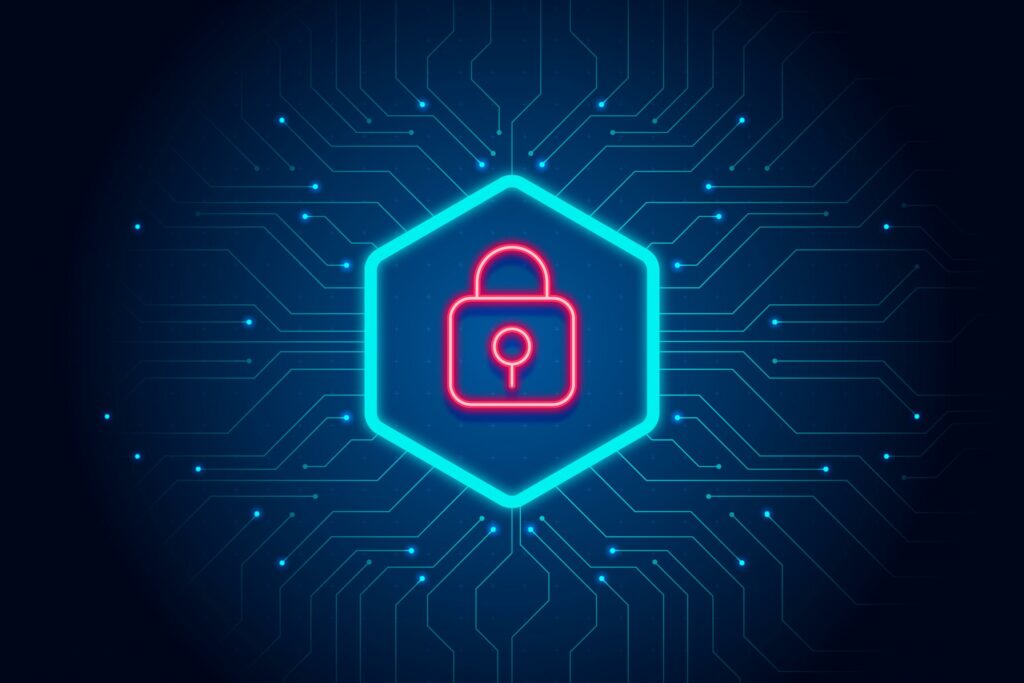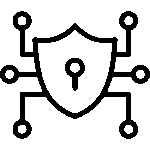4 Types of Cyber Attacks & How to Prevent Them -CyberSecurity – Kinematic Digital

Cyber security has become a critical necessity for organisations of all sizes and industries. Yesterday’s solutions are no longer enough to keep up with the evolving threats cyber criminals unleash on a daily basis. In this blog, we will discuss five different types of cyber attacks and how you can protect yourself from them. By understanding these threats, you can put in place solutions that will safeguard your organisation from data breaches and cybercrime. So stay safe online!
Secure your remote workforce, fast
As cyber crime continues to grow, so too does the need for businesses to secure their remote workforce. Cyber criminals are targeting remote workers in order to steal information and disrupt business operations. To protect your workforce, ensure that you’re using the right security measures – like passwords and firewalls – on your remote systems. Make sure all employees know how to report suspected cyber crimes, so they can help take action quickly. And finally, stay ahead of the curve by regularly educating yourself about cyber threats and how to prevent them from happening.
What is cybersecurity all about?
Cybersecurity is all about keeping your business safe from cyber attacks. Not only do these malicious acts cost organizations in terms of money and time, but they can also put people’s personal data at risk. To protect yourself against cyber threats, it is important to understand the different types of attacks out there and implement security measures accordingly. Make sure you keep up to date with the latest security threats so that you are able to spot them before they cause too much damage. And lastly, remember that cybersecurity isn’t a one-time job – it needs regular attention and maintenance in order to stay effective over time.
People
1. Cyberattacks can happen to any business, big or small – even at home. 2. Protect your employees by implementing a remote workforce policy and restricting access to certain files and folders. 3. Educate them on cyber security and how to prevent attacks from happening in the first place – this will help keep them safe both in the office and at home too! 4. Make sure you have all the necessary software installed on your computers so that data is protected from unauthorized access, whether it be through ransomware or malware infections of any kind
Processes
Cyber security is everyone’s responsibility, no matter what size or sector of business they are in. Here are some key points to keep in mind: – cyber attacks can happen to any business – large or small – The most common type of cyber attack is spoofing, which is when someone tries to make you think they’re somebody else – Prevention starts with understanding your systems and how they are vulnerable – this includes the way you store data – Make sure your employees know how to protect themselves and report any suspicious activity immediately!
Why is cybersecurity important?
Cybersecurity is important not only because of the threat cyber-attacks pose to your business, but also because they can have a serious physical impact on infrastructure and systems. There are different cyber threats that businesses need to be aware of – social engineering, phishing, malware etcetera. By taking measures such as detecting these attacks early, you can prevent them from having a detrimental impact on your system or data. In addition to security measures put in place by you alone, it is often beneficial for businesses to implement cybersecurity training programs for their workforce. This will equip them with the skills needed to identify and deal with malicious activity online safely.
Types of cybersecurity threats
Cybersecurity threats come in many different forms and can come from a variety of sources. As a result, it’s important to be aware of all the possibilities and take steps to protect yourself. Here are five types of cybersecurity threats and the steps you can take to protect yourself from them: malware, phishing, spoofing, DDOS (distributed denial-of-service), and data breaches. Make sure you have an early warning system in place that detects potential threats and notifies you immediately. Always use common sense precautions when online, and follow advice from your antivirus provider to stay safe.
Phishing
Phishing is a type of cyberattack where attackers try to trick you into revealing personal information. You can protect yourself from phishing by being aware of the signs and always verifying the source of an email. Another common type of cybersecurity threat is ransomware – where hackers lock your computer files until you pay them a ransom. Always keep your antivirus software up-to-date and practice safe browsing habits to stay safe online.
Social engineering
Social engineering is a cybersecurity threat in which hackers gain access to information such as personal data, login credentials, and more by manipulating people into doing things they ordinarily wouldn’t do. One of the most common ways social engineering attacks take place is through malicious links or emails that trick you into disclosing sensitive information. Make sure you are vigilant about your security measures and stay aware of what’s happening around you – don’t trust anyone blindly! Additionally, install antivirus software on your computer to help protect yourself from malware-infected websites and email attachments.
Ransomware
Ransomware is a type of cyber attack that locks your computer screen and demands money to unlock it. It can be very frustrating, as you don’t always know when it’s happening or what steps to take to protect yourself. However, there are various ways to safeguard yourself from ransomware – by installing anti-virus software for example. This will help identify and prevent malware infections before they cause any major damage.
Malware
Malware is a term used to describe any type of software that can damage or disrupt your computer. Viruses, spammers, hackers and botnets are the most common types of malware. Viruses are tiny pieces of software that hijack your computer and insert their own code into it. This can cause all sorts of damage, from system slowdowns to data loss. Spammers send unsolicited emails in an effort to get you to open them (often containing malicious content). Hackers use nefarious means like phishing attacks or gaining access through weak security measures in order to gain unauthorized access and modify or delete data on your computer. Finally, botnets are armies of robots controlled by one hacker which they use for a variety of malicious purposes such as distributed denial-of-service attacks etcetera
Get started
Cybersecurity threats are on the rise, so it is essential to take measures to protect yourself. Here are five key tips that can help you stay safe: 1. Be aware of potential cyberthreats and know how to identify them. 2. Use security features on your computer such as a firewall and anti-virus software. 3. Update your software regularly to ensure you’re protected from the latest cyber threat developments. 4 Stay informed about cybersecurity threats and what steps you need to take in order for protection measures to work optimally for you!
What are the elements of cybersecurity and how does it work?
Cybersecurity is a critical element of information security, and it’s important to understand the different types of cyberattacks and how to prevent them. A cybersecurity system must have multiple layers of security in order to prevent unauthorized access, use, or disclosure of data. In order to protect data, cybersecurity systems must have an incident response plan in place in the event of a breach. Prevention measures can include training employees on cyber security and using technology-based security solutions, like firewalls and intrusion detection/prevention systems (IDS/IPS). By understanding the different types of cyberattacks and how cybersecurity works, you can stay safe and protect your data.
The ultimate guide to cybersecurity planning for businesses
Cybersecurity is an ever-growing concern for businesses of all sizes. It’s important to be proactive in preventing cyberattacks and ensuring that your data remains safe from unauthorized access. To do this, you need a comprehensive cybersecurity plan that covers all aspects of your business – from hardware security to software security measures. To make sure everything runs smoothly, it is also essential to have the right controls in place – such as firewalls and password management systems. In addition, it’s vital to keep up with the latest ransomware threats so you can protect yourself should something go wrong.
What are the benefits of cybersecurity?
There’s no denying that cybersecurity is one of the most important issues of our time. It’s been estimated that cybercrime will cost businesses a total of $2 trillion by 2021. That’s why it’s so important to take precautions and learn about the different types of cyber attacks. By understanding the benefits of cybersecurity and taking the necessary precautions, you can ensure your computer is safe from viruses and other cyber threats. Make sure you have the latest antivirus software installed and practice good online hygiene habits, such as not clicking on suspicious links or downloading attachments from unknown sources. Stay informed about all of the latest cybersecurity news so you can stay ahead of the curve and protect yourself from malicious attacks.
What are the top cybersecurity challenges?
Cybersecurity is a top priority for businesses of all sizes. Yet, even with the best security measures in place, cyberattacks can occur. By understanding the different types of cyberattacks and how to prevent them, you can stay safe and secure. Here are the top cybersecurity challenges:
What are the different types of cybersecurity threats?
Cybersecurity is a critical issue that demands constant attention. That’s why it’s important to be aware of the different types of cybersecurity threats and take appropriate measures to protect your data. For example, insider threats occur when employees access data they’re not authorized to access. This is a major security threat because it allows unauthorized persons access to sensitive information, such as customer data. To protect yourself from insider threats, it’s important to implement strong security measures such as strong passwords and 2FA. Additionally, stay up-to-date on cybersecurity trends so you can identify and prevent future threats.
How is automation used in cybersecurity?
Cybersecurity is a critical issue that organizations need to take seriously. Automation is one of the key tools that are used in cybersecurity to help identify and prevent malicious activity. Technology can be used to block or disable unauthorized access, as well as mitigate the damage caused by an attack. The use of automation has made it possible for organizations to quickly detect and respond to attacks. There are a variety of security tools available that can help automate security processes, including cyber-security software and cloud-based solutions. Make sure to choose the right tools for your organization’s needs, and keep up-to-date with the latest cybersecurity threats so you can stay safe and protect your data.
The Evolution of the Cyber Security Threat Landscape
Cyber security threats have evolved at an unprecedented rate over the past few years, which makes prevention difficult. Today’s attackers are more creative and sophisticated than ever before, which makes it difficult to defend systems against cyber security threats. However, by being aware of the evolving threat landscape and implementing the latest cybersecurity measures, you can reduce your chances of becoming a victim. There are five main types of cyber attacks that attackers use to gain access or damage systems protected by cyber security measures: reconnaissance, exploitation, malware delivery, denial-of-service (DDoS), and botnet propagation/spamming campaigns. Each type of attack has its own specific tactics that attackers use to gain access or damage systems. To reduce your chances of becoming a victim of a cyber attack, be aware of the evolving threat landscape and make sure you’re staying up to date on the latest cybersecurity trends.
Gen V Attacks
Cyber security threats are on the rise and businesses of all sizes need to be proactive in protecting themselves from them. Gen V attacks involve using the internet of things for malicious purposes, making it even more important for organisations to take cybersecurity seriously. Attackers have a specific aim in mind – they want to gain access to sensitive information or steal data that could be used for ransom or blackmailing purposes. By being aware of current cyber security threats and implementing preventive measures, you can protect your business against potential damage.
Supply Chain Attacks
Businesses of all sizes are increasingly being targeted by cyber attacks due to their sensitive data. Attackers often target the weakest points in a supply chain – from suppliers and customers alike. By taking preventive measures, you can lessen the chances of your business falling victim to such an attack. Some of the key steps that businesses should take include educating employees about cyber security threats and risk awareness, ensuring systems are up-to-date with cybersecurity threats, and installing robust security measures.
Today’s enterprises require a new approach to cybersecurity
Cybersecurity is one of the most important issues facing today’s enterprises. The threats of cyberattacks are on the rise, and if left unchecked, they could have devastating consequences. To prevent these attacks, businesses need to take action now. Here are five types of cyberattacks, and how you can defend yourself against each one:
Broad. Integrated. Automated.
Cyberattacks are on the rise, so it’s important to be aware of the dangers and take action to prevent them. cyberattacks can be classified into five different types – isolated incidents, targeted attacks, suspicious emails, DDoS (distributed denial-of-service), and Ransomware. Each type of cyberattack has its own set of symptoms that you should watch for in order to protect yourself. For example, if you’re experiencing problems with your computer, be on the lookout for suspicious emails that may contain malware. cyberattacks are broad, integrated, automated, and often go unnoticed until it’s too late. That’s why it’s important to be proactive and learn what signs to look out for in order to protect yourself. Remember, cyberattacks are not just for big business – they can happen to anyone at any time!
Application Specific Access
Cyber security is everyone’s business, and it’s important to be aware of the different types of cyber attacks. Here are the five types of cyber attacks, and how you can prevent them:
Securing Any Application Journey
Cyber security is one of the most important issues facing businesses today. With cyber attacks on the rise, it’s essential to be aware of the different types of cyber attacks and take preventative measures to secure your application journey. Here are five types of cyber attacks, and how to prevent them:
The Future of Network Edges requires Zero Trust Edge
Cyber security is one of the key issues that businesses are facing today. The proliferation of devices and the internet of things (IoT) has made cyber attacks more common. In order to mitigate this threat, the future of network edges requires zero-trust edge networks. These networks use innovative security techniques that protect data at the device level and beyond. By implementing zero-trust edge networks, organizations can reduce their risk from cyberattacks and maintain their competitive edge.
Real-Time Protection. Simplified
Cyber security is essential for everyone, not just business owners. As cyber attacks become more common, it’s important to know the signs of a cyber attack and how to prevent them. There are five types of cyber attacks, and each one requires a different type of protection. To protect yourself from these attacks, start by knowing the five types of cyber attacks and how to prevent them. Next, make sure you’re up-to-date on the latest cyber security threats. Be aware of any suspicious emails or social media posts and take action fast by reporting it to your cyber security team or authorities. Finally, keep your information safe by using cyber security measures like password management and cyber security software.
Frequently Asked Questions
What are some tips for keeping my computer safe from cyber attacks?
Keeping your computer safe from cyber attacks is as easy as always updating your software and browser. Additionally, make sure you have up-to-date ant virus protection, firewall and malware removal tools installed on your device. And lastly, educate yourself about different types of cyber attacks in order to better detect and prevent them from happening to you or your business.
How can I protect myself from ransomware and other malware?
One of the best ways to stay safe from ransomware and other malware is to use a strong password, regularly update your antivirus software, and exercise caution when clicking on links in emails or messages from strangers. Additionally, use the file encryption feature built into many applications to protect your data.
What are the best ways to keep my online privacy?
It’s important to keep your online privacy secure by following a few simple tips. 1. Always use a strong password that is at least 8 characters long and includes lowercase and capital letters, numbers and symbols. This will help to protect your login credentials on all of your personal accounts. 2. Use 2-factor authentication to secure your login credentials on all of your personal accounts. This will help to eliminate the risk of someone unauthorized accessing your information. 3. Avoid clicking on links in unsolicited emails or messages, as this may open up malicious attachments that can infect your computer with malware. 4. Don’t share too much personal information online, especially if you don’t know the person who is messaging you. Doing so could put your personal security at risk.
Is it necessary to have a password protection on all of my devices?
There is no one-size-fits-all answer to this question as the answer largely depends on the type of device you are using. However, for personal computers and laptops, it is recommended that you protect them with a password. This way, if the computer is lost or stolen, it will be harder for someone to access your data. Similarly, smartphones and tablets should always have a passcode – this way, even if the device is misplaced or stolen, your data won’t be easily accessible. Additionally, passwords can be used to help keep your data and information safe in case of theft or loss. Simply create a password for each of your devices and make sure to regularly change them so that no unauthorized person can access your information.
How do I know if my business is vulnerable to cyberattacks?
It’s always important to be aware of cyberattacks, as they can happen to anyone, no matter their business size or location. Cyberattacks can occur through vulnerabilities in websites and online systems, stealing confidential data, and spear phishing. If you don’t have proper cyber security measures in place, your business could be affected by a cyberattack at any time. There are several ways that you can protect your business from being targeted by hackers -education is key! Make sure to keep up with the latest cyber threats so that you can respond quickly if an attack happens.
What are the most common cyber threats?
Cybercrime can take many different forms, but the most common ones involve phishing, malware, DDoS (Distributed Denial of Service), and SPAM (Spam Emails/Message). Phishing is a type of cyberattack in which criminals try to trick you into disclosing personal information such as login credentials or bank account details. Malware is malicious software that can steal sensitive data, install spy programs, or cause other damage. DDoS (Distributed Denial of Service) attacks use bots to flood a target website with traffic in order to make it unavailable. SPAM (Spam Emails/Message) is the sending of unsolicited emails containing links to malware or clickbait stories without your consent.
What are some best practices for cyber hygiene?
There are a few best practices for cyber hygiene that you should follow to stay safe online. These include: 1. Install antivirus software on all devices you use online, including your laptop, desktop computer, and mobile phone. 2. Educate yourself about the different cyber threats out there and make sure to protect yourself from them. 3. Use strong passwords that are at least 8 characters long, include a mix of upper case and lowercase letters, digits and special characters. 4. Always keep up with security patches so that you’re protected against the latest virus strains.
How do I protect my computer from viruses and malware?
One of the best ways to protect your computer from viruses and malware is by using a firewall. A firewall blocks malicious traffic from entering your computer, making it harder for cybercriminals to access your data. You can also use antivirus software to scan your computer for malware and viruses. Antivirus software can help to remove any threats that may be present on your computer. Make sure that you keep your antivirus software up-to-date and check your computer regularly for any suspicious activity. Additionally, make sure that you practice safe online habits and use common sense precautions such as never giving out personal information, being careful about what links you click, and downloading files only from trusted sources.
How can I stay safe online?
A few key tips to keep you safe online include: 1. Always use a strong password. Make sure to change it regularly, especially if you’re ever going to add new personal information to an online account. 2. Use different browsers and platforms when signing in to different sites. This way, if one site is compromised, your information will be less likely to be stolen in the future. 3. NEVER put your personal information such as social media login credentials, credit card numbers, or bank account details on the internet. Instead, store them securely on your own computer or mobile device. 4. Always be careful of suspicious emails and messages that ask for sensitive personal information like passwords or bank account details. If something feels too fishy, don’t do it!
Conclusion
Cyber security is one of the most important aspects of business today, as cyber attacks are becoming increasingly sophisticated and widespread. To stay ahead of the curve, it is essential to understand the different types of cyber attacks and implement measures to prevent them. In this blog, we have outlined the five main types of cyber attacks and provided solutions to protect your business from them. Make sure to read through this blog and take action to secure your business against cyber threats!












